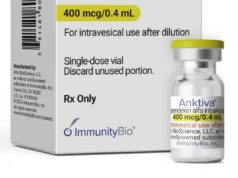During a pandemic like COVID-19, one of the most important tools for public health officials is a reliable system of quickly reporting accurate data about the outbreak from communities to states and the federal government so officials can rapidly identify and implement the most effective interventions.
This requires a standards-based interoperable system, which many jurisdictions across the U.S. still have not been able to implement, largely due to lack of federal funding and slow adoption of existing standards.
COVID-19 should be a wake-up call to finally invest the resources necessary to complete this important work.
The U.S. has made significant progress toward this in recent years, but the work is unfinished. For example, through the HITECH Act and meaningful use, the government has moved the health sector toward widespread adoption of electronic health records.
But we still have a long way to go toward implementing detailed standards for exchanging electronic health information, such as the newer FHIR standards and the Electronic Case Reporting, or eCR standard, which would be particularly helpful with the current outbreak.
These interoperability standards – if widely implemented – would enable states and jurisdictions to report more comprehensive and timely data about outbreaks to their state public health agencies and the Centers for Disease Control and Prevention. The importance of this capability during a fast-spreading virus like COVID-19 cannot be overstated.
And the investment doesn’t stop with implementation of the standard. Continuous funding is needed to ensure these systems operate well.
This means training for staff as they integrate electronic reporting of data into their workflow, employing technical staff to perform ongoing maintenance and upgrades of antiquated systems to better handle the influx of electronic data, and creating data analysis tools to help public health workers to understand the data during a crisis. We also need incentives and regulations for electronic health record vendors to act more quickly to adopt these standards.
How many jurisdictions still need to upgrade their systems? We don’t have complete data on this, but anecdotal evidence yields examples across the country of outdated systems and inconsistent interoperability of systems and reporting protocols. Some areas are still reporting data by fax and phone.
We have seen examples of systems and staff being overwhelmed by the crush of electronic data because old systems and workflows were not adequately prepared for the new data flows. The government should gather data on this, and devise a budget based on this data to bring all jurisdictions to the same high level of reporting capability.
The historic approach to funding these needs is to allocate large sums during the crisis. We’re seeing this now with the $8 billion Congress recently approved for COVID-19. A small fraction of that will go to public health reporting. We saw similar emergency funding for Ebola, MERS and SARS. But once these crises fade from view, so does the funding. A substantial, permanent budget line item for all local and state jurisdictions for public health is needed.
We’ve long known that pandemics are a threat to our national security, our economy, and our well-being as a society. Coronavirus is a reminder to take them seriously and recognize that local and state public health officials and their technology are among our first lines of defense. We must support them, not just during a crisis, but consistently so they can help protect us when the next new and deadly virus bears down.
Rick Keller is director of Altarum’s Center for Connected Health, which helped the state of Michigan create its disease surveillance system.








